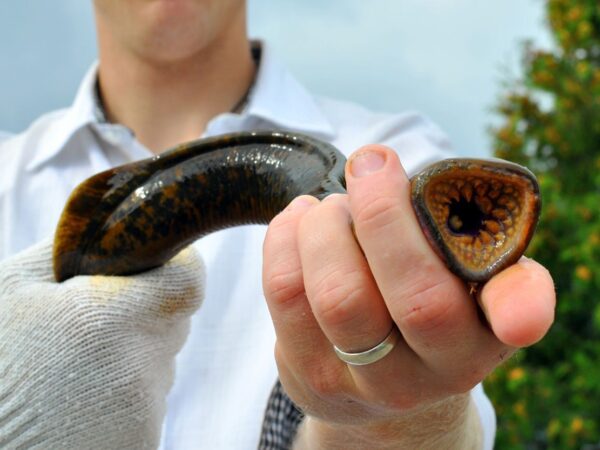
By Lester Graham, Michigan Radio
The Great Lakes News Collaborative includes Bridge Michigan; Circle of Blue; Great Lakes Now at Detroit Public Television; and Michigan Radio, Michigan’s NPR News Leader; who work together to bring audiences news and information about the impact of climate change, pollution, and aging infrastructure on the Great Lakes and drinking water. This independent journalism is supported by the Charles Stewart Mott Foundation. Find all the work HERE.
For the first time in the Lower Peninsula, biologists have found a nuisance algae called “rock snot.” This kind of algae, called didymo, likes pristine waters such as Michigan’s trout streams. It was found in the upper Manistee River in Kalkaska County.
“It tends to look like a cotton wooly substance. And despite the term ‘rock snot,’ it’s not slimy; it’s actually quite coarse,” said Joanne Foreman, Invasive Species Communications Coordinator with the Michigan Department of Natural Resources.

Didymo (rock snot) is caught on the hook of this fly fishing lure.
Often it’s a tan color or can be darker, as sediment is trapped by the fibers.
“You would see kind of a blobby cotton bunch of masses that over time might form into long ropes that sort of flow with the current in the stream,” Foreman said.
It can ruin the habitat of organisms which are fish food.
“When we get something that’s covering a substrate where those macroinvertebrates want to inhabit, then we will see likely issues with their ability to thrive,” Foreman explained.
Right now, there’s no way to eradicate rock snot. It can be spread by fishing gear and waders that are not properly treated.
Foreman said when rock snot is in its early stages it’s a single celled organism and cannot be seen with the naked eye. Anglers are encouraged to wash gear and waders with a bleach solution or a product called Virkon, a type of disinfectant.
To stop the spread of this nuisance and aquatic invasive species, anglers and boaters should carefully clean equipment and boats before leaving a river or lake.
According to a state news release, rock snot was first discovered in the St. Mary’s River near Sault Ste. Marie on the Canadian side of the river. By 2015, it was appearing on the U.S. side.
Lake Superior State University has been looking into didymo there. Researchers will now be assisting the Department of Natural Resources and the Department of Environment, Great Lakes, and Energy (EGLE), in studying the newly found rock snot in the Manistee River.
A water quality biologist with the Little Traverse Bay Bands of Odawa Indians, Samuel Day, discovered the rock snot in the Manistee River. Samuel Day collected samples and sent them to EGLE in November.
The state officials are asking you to take photos if you think you’ve discovered rock snot. Note the location and send the photos and information to the Midwest Invasive Species Information Network.
Catch more news on Great Lakes Now:
Scientists look for clues to Lake Superior algae blooms
Lake Superior Summer: Blue-green algal blooms come to a lake once believed immune
Featured image: The brown-colored clumps are blooms of didymo, also called “rock snot.” In this photo of the Manistee River, it’s covered up much of the rock and substrate, habitat for macroinvertebrates, which are eaten by fish. (Photo Credit: Department Of Environment, Great Lakes, And Energy)




